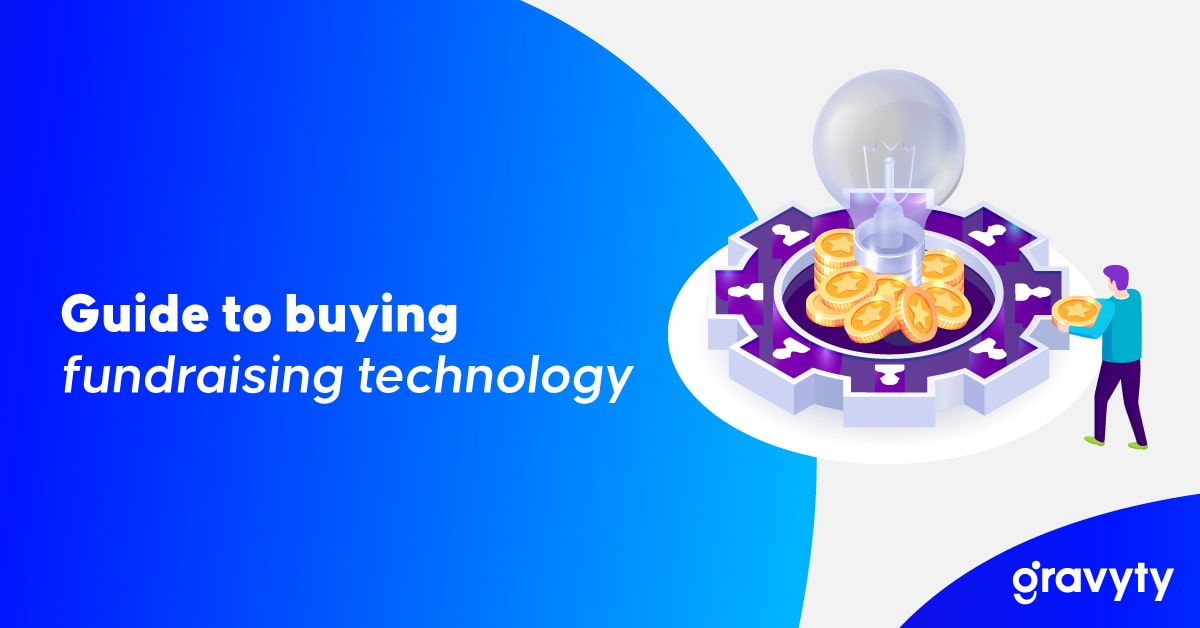Guide to buying fundraising technology

Step-by-step guide to evaluating, advocating + adopting a modern fundraising software solution for the digital age
Finding the right fundraising software is complicated
It is one of the inherent challenges in fundraising, and organization leaders are tasked with interpreting, analyzing and making decisions on a daily basis. Some decisions can be more complicated than others, like how to modernize a fundraising program.
“Modernization” can mean so many things, and depending on what your organization needs, it can differ from team to team. Identifying where to begin before making a final decision can be challenging. As a result, finding a perfect solution is nearly impossible.
However, it is possible to cut through the noise. This guide will give you the confidence to approach this undertaking and set your team up for success. It will also help you build your business case for new technology and help navigate a successful platform implementation.
Get the full guide
Guide to buying fundraising technology
Set your goal
Before searching for a solution, it’s important to have the desired outcome in mind. Because every organization is different, your needs for a solution depend on a range of factors based on how you operate and your organization’s goals. Begin your search with a list of your organization’s short- and long-term goals. Your future development plans can help you identify which solutions suit your organization now and for the future.
One important element in a modern fundraising solution is scalability. Scalability is a product’s ability to adapt to the volume of problems that need solving. For example, if your goal is personal stewardship for donors at scale, the ideal solution would enable you to do so regardless of how many new donors you acquire over time. Likewise, as your organization continues to grow, you want your software solutions to grow with you without becoming a cost or time burden.
Set your budget
Cost is always a factor when purchasing a new software. However, cost should not be the sole consideration for a solution. Instead of assessing a solution on price alone, consider the potential value it will create. In other words, look for solutions that provide a clear return on investment (ROI). Specific solutions may solve your organization’s problems in the short term, but without tracking and analyzing performance, you may find yourself spending money without understanding whether your organization is getting a return on it.
Determine a solution type
In Software as a Service (SaaS), the term “solution” is often used haphazardly. It’s not a synonym for software or tool. Instead, a proper solution is the combination of tools, strategy and process(es) used to meet a challenge or get past a problem.
Tools alone won’t solve your problem
Take this analogy: If someone has to paint a barn in three days by themselves, the challenge is one of coverage over time. Some may say, however, that the solution is a paintbrush. However, painting with the brush does not provide them with the efficiency and coverage to complete the job in three days. A paintbrush alone is not the solution. The real solution involves using an industrial paint sprayer (a tool) and creating and executing a process (a strategy) that ends with the barn being fully painted in three days or less.
When it comes to evaluating fundraising software, remember that it takes both a tool and an executable strategy to truly create a solution.
Regardless of what problem you are trying to solve, there is a solution for it. Chances are, your organization already uses software solutions. So let’s take a look:
Because there are risks associated with any solution, you will need to assess which type your organization is most comfortable with. For example, many computer virus software solutions are installed, so less data leaves the physical computer. Cloud-based fundraising software solutions must ensure that the information it is hosting is secure in the cloud, often by proving that they are SOC2-compliant.
Get the full guide
Guide to buying fundraising technology
Evaluate fundraising software solutions
After taking the time to assess what your organization’s needs are, it’s time to begin finding fundraising software vendors that fit the bill. Before bringing any possible solutions to your board, CFO or other decision-makers, you’ll need to understand the value (and drawbacks) each solution provides.
Value assessments include pricing. However, many software companies do not list prices on their websites because the cost can often be custom based on your organization’s needs. Connect with the vendor early in the evaluation process to see how the tool would fit your organization’s needs and request a pricing proposal.
This meeting typically takes place during a product demonstration. Come prepared with questions to ask to help you determine if the solution is right for your organization.
12 questions to ask before you buy
- What type of organization sees the most success from using your product?
- How does this complement the systems we already have in place?
- Can you show the direct ROI from the solution?
- How long will it take to get my team up and running?
- Does your solution feed data directly back to our CRM?
- Does your solution create any new bottlenecks or challenges we need to address?
- Who are the end users of your tools (i.e., major gift officers, etc.)?
- How do we track usage and metrics?
- Does the solution include support beyond technical support & implementation?
- Where does the data used come from? Does that present risks?
- Does this solution work for all sizes of organizations?
- Why should we choose you over competitors?
If there ever was the elephant in the room, the total cost is it. Ask for price, cost broken down by contract year, special discounting for extended contract and the bottom line investment.
Make the case
Once you know the investment and how the fundraising software will fit into your team’s existing workflow, you will need to find room in your organization or team’s budget. Of course, each organization handles budgeting differently so this step will depend on your internal processes. However, there are ways to make a case for your team’s need for a solution that will benefit the organization. Use the information you gathered from asking questions in the demo to make the case for the investment.
Handle internal process changes
Asking team members to change their workflows, especially seasoned and skilled employees, can be met with resistance and objections. If your solution requires a significant change for your workforce, bring your key stakeholders into the conversation early and often, so they help you with change management. Luckily, not all software requires employees to change the way they work.
The best fundraising software solutions seamlessly integrate into existing processes that enable people to perform their jobs at a higher level without getting bogged down by logging into a different website or working on another screen. Look for solutions that require little to no functional changes in how you work to achieve adoption with little pushback.
With implementation and adoption, it’s not just existing employees that will have to use the tools. Any new hires will also need to be introduced to your systems. To get new hires ramped up as quickly as possible, you want your tech stack to be as easy as possible to learn.
Make your fundraising software work for you
Technology must be considered an extension of the workforce in today’s world. In the same way that organizations vet potential employees, organization leaders should look at tech solutions with a similar eye. In addition, tech is ever-changing, meaning leaders will need to assess and implement new tech to drive organizational success properly.
For fundraisers, technology’s impact can directly affect the bottom line and the organization’s overall achievements. Therefore, fundraising leaders must recognize technology’s important role in their team’s performance and take the proper steps to implement modern, forward-thinking tools. We hope that this guide will help you make informed decisions when assessing new tools that will enable your organization to accomplish incredible things.
Built to engage, ask and thank your donor network, our ecosystem of fundraising solutions works together to enhance your reach and simplify day-to-day activities. Get a demo.



